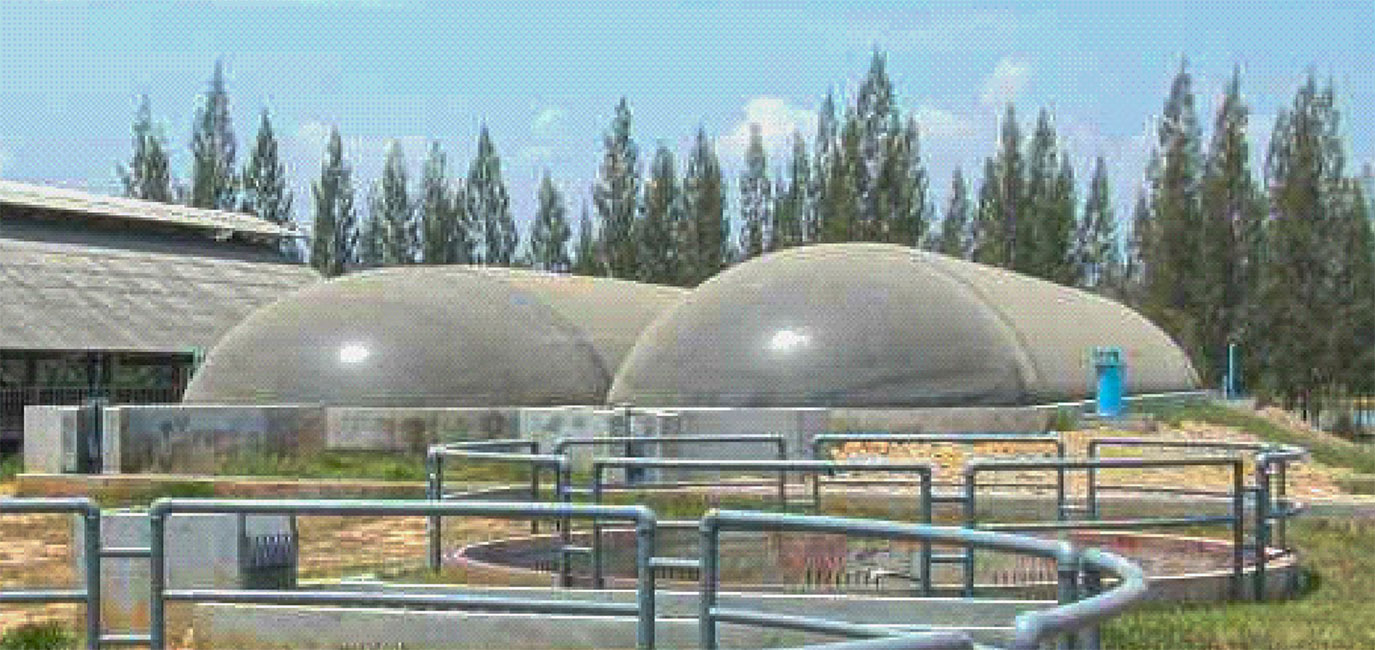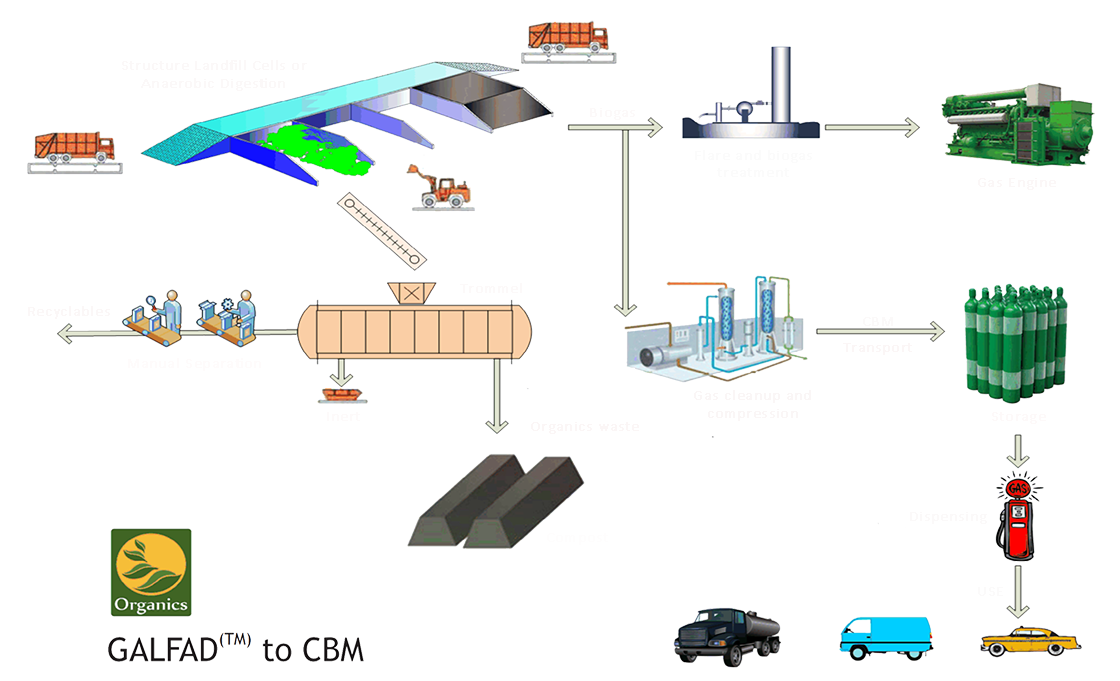Biomethane
The production of biogas presents an opportunity to go some way in replacing traditional fossil fuels with an alternative that can be produced from the daily activites of us all. Organic material is an ideal substrate for the production of biogas and, under controlled conditions, the natural process of degradation can result in the production of a valuable resource.
The conversion of methane from biogas to a useable fuel, whether from landfill biogas, digester biogas or gas from disused coal mines, provides an opportunity to recover energy from fuel sources that might otherwise be wasted.
Compressed Biomethane
Flow diagram of the Compressed BioMethane process. The organic material is separated and biogas is stored, cleaned to natural gas quality and compressed prior to being transported to final destination.
Why Compressed Biomethane?
The total worldwide Natural Gas Vehicle (NGV) fleet is now nearly 9.2 million when only counting cars, trucks and buses. It is estimated that worldwide NGV fleets could reach 50 million vehicles by 2020, and between 100 and 200 million by 2030. This would correspond to the use of approximately 200,000 to 400,000 million litres of diesel per annum. It is similarly estimated that the bio-methane share of these figures will be approximately 10%.
What are the sources of biomethane?
Bio-Methane may be produced from different sources, such as landfill gas or biogas produced by the anaerobic digestion of municipal solid waste, manures, agricultural waste, tapioca mill effluent and palm oil mill effluent (POME), to name but a few.
The technology involved in the production of Compressed Bio-Methane (CBM) is well developed, tried and tested.
Once produced and collected the bio-methane must be cleaned of impurities, such as carbon dioxide, hyrdogen sulphide, siloxanes and volatile organic carbons. This is done It is then compressed, typically to 200 atmospheres, ready for dispensing and use as a fuel.
What are the main parameters to consider?
As with all facilities involving a series of processing stages, there several are critical elements which must be secured. However, as the production of CBM from biodegradable substrate is comprised of proven technologies, no innovation or invention is required.
Integration of such technologies is very much application-specific. For example, it is critical to define and understand the nature of the feedstock to correctly select the appropriate anaerobic digestion technology, where a biogas supply does not already exist.
What are the advantages of CBM?
The production of CBM is an environmentally sound method of recovering the energy content of organic waste. Not only does it avoid a highly toxic greenhouse gas being emitted to atmosphere, the final product may be used as a vehicle fuel or transported for energy production at a location remote from the point of production.
Many different types of organic wastes can be used to produce CBM. The key to success is to ensure that the technology selected is optimum for the specific waste stream, opportunity and location of production.
The engineering technologies employed are all proven in many applications, so there is no technology-risk to account for and, as a vehicle fuel sold into the market, demand is almost guaranteed.
Send download link to:
Biogas is emerging as an important fuel and an essential part of the circular economy. Organics offers a wide range of equipment to handle the most demanding of biogas production and handling situations. Organics role ranges from EPC contractor to the supply of bespoke, speciality process units.
Our objective is to ensure that, working with private businesses and government agencies, we can supply the best techniques, quality services and equipment to ensure that the management of waste from our everyday living does not pose a problem but is seen as a challenge to convert a potential pollutant into a valuable resource.
Liquid Biomethane

Liquification of Methane
The liquification of methane from landfill sites, digesters and coal mines is an efficient way to recover energy that would otherwise be lost to the atmosphere, thus contributing to the greenhouse effect.
Organics offers mobile liquification units ranging in size from 2 to 10 tonnes per day. Larger fixed installations to provide upt to 100 tonnes a day can also be provided.
Key Features of this type of system:
- Optimum use of energy by the integrated deployment of cooling systems.
- Industrial grade CO2 recovery as an optional by-product.
- Mobil epackaged units available for increased flexibility.
- Fully integrated cryogenic support system.
- High purity methane product
- Purified compressed gas take-off points.
- Ideal for transport from point of production to point of use.
- Designed for use with biogas and mines gas.
- Efficienty removal of oxygen, carbon dioxide and trace gases integrated within the standard system.
Send download link to:

ORGANICS GROUP
Please consult the following pages before using our site:
Organics Privacy Policy
Data Privacy and Protection Policy
CONTACT
Please contact us for further information
SOCIAL MEDIA

